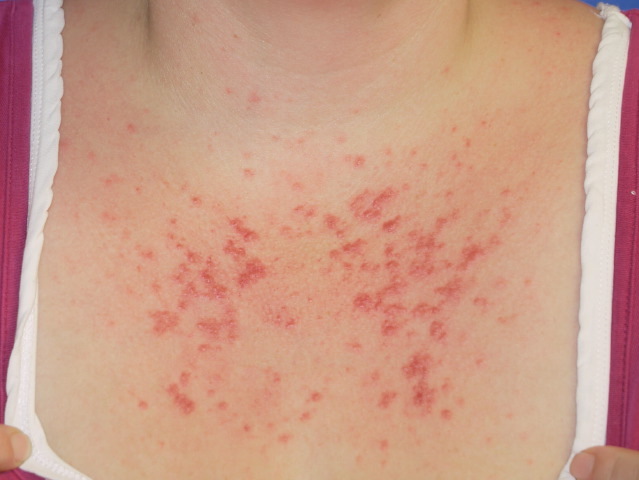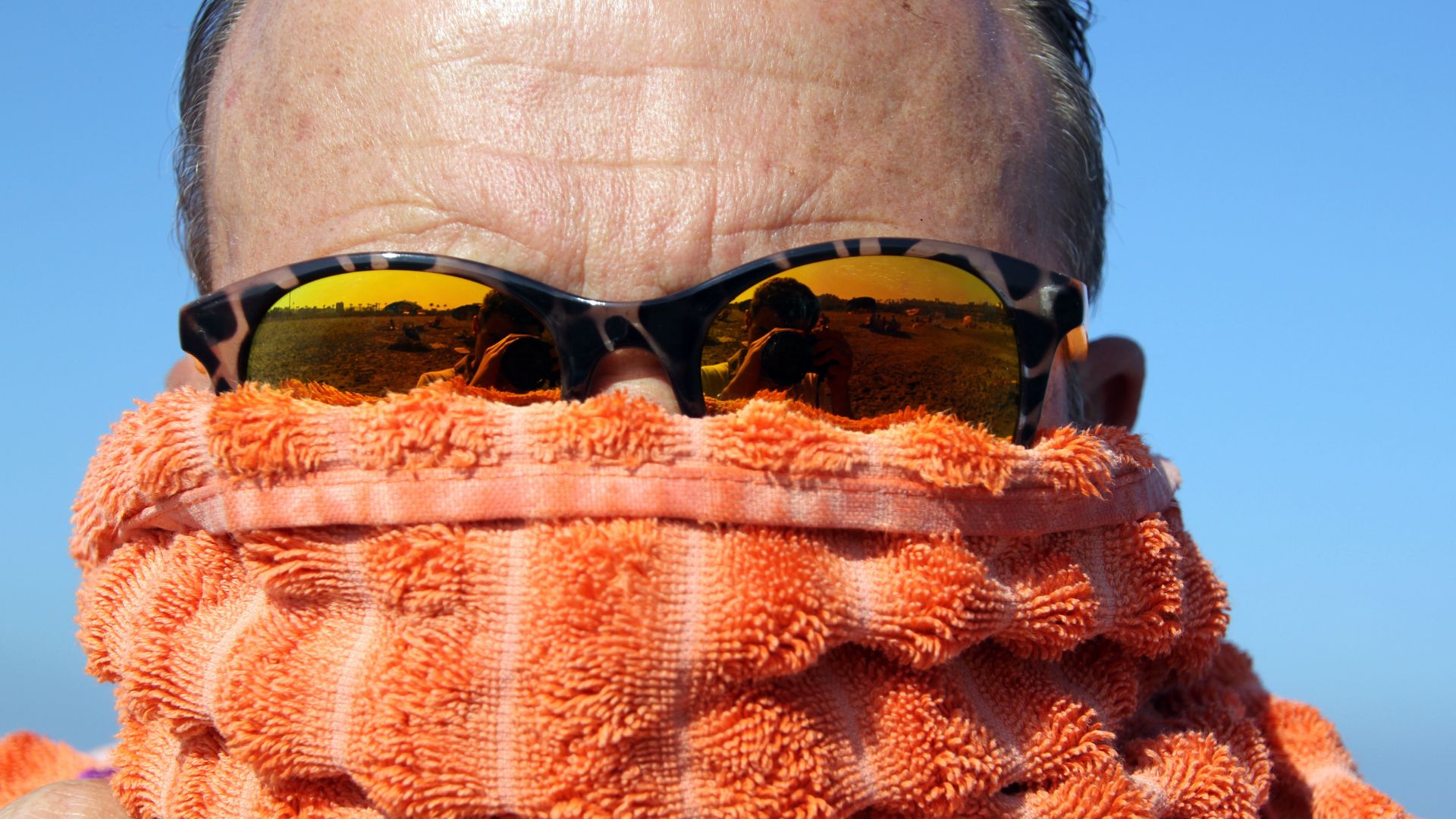At the end of winter, our skin is no longer used to the sun. You may be subject to temporary skin reactions, so you should protect yourself. This article from The Conversation looks at sun allergies and how to protect yourself against them.
The sun returns and, with it, its procession of small skin inconveniences. Without going as far as sunburn, the encounter of our skin just out of winter with the ultraviolet (UV) rays of the solar spectrum (UVA, UVB and UVC) can result in various unsightly reactions, most often benign, but sometimes disabling.
Advertisement
We are talking about “sun allergies” in the broad sense, or photodermatoses, which include in particular sun light, whether it is benign summer (frequent) or polymorphic (rarer)solar urticaria or photosensitization reactions.
They most often occur on areas of the skin that are usually little exposed – or which have not been exposed for a certain time (at the end of winter for example): the neckline, the back, the shoulders, but not the face.

This photosensitivity can manifest itself in various ways: by pimples, small vesicles or red patches, irritation and/or a more or less virulent itching sensation (pruritus).
Its appearance, intensity and persistence vary depending on the individual and the type of allergy: summer light spots take the form of small pimples, its “version” polymorphic causes larger red lesions (with papules, etc.). Hives cause a burning sensation in the edematous lesions, but it fades within a day.
Advertisement
In most cases, however, the symptoms disappear spontaneously, especially with tanning. For polymorphic lucite, this may take several weeks.
All skin types can be affected. We therefore consider that 10 to 20% of the French population would be affected by summer light spells. The latter appear more readily in young women aged 20-30 (90% of cases)… which does not mean that men are spared. Finally, having fair skin increases the risk of being affected.


The origins of sun allergy
The exact cause of these allergies is not always known, but photodermatoses are a abnormal inflammatory reaction of the skin to light.
For some, hives in particular, they result from a reaction of immune cells present in the skin. In response to exposure to UV rays, immune cells, particularly mast cells and basophils (both members of the white blood cell family), can release histamine which is a major mediator of allergic responses.


Histamine is an immune system signaling molecule with inflammatory properties. It leads to a dilation of the small blood vessels responsible for the skin redness that appears. Histamine can also cause an increase in the release of water from the vessels, leading to local edema. In addition, it acts on nerve endings and causes the itching associated with allergies.
For others, such as photosensitization reactions, the allergy would be caused by a chemical reaction between sun exposure and a product applied to the skin (perfume, cosmetic, etc.) or oral medication (antibiotic, diuretic, antifungal, etc.). .), which would make the product sensitizing.
Not all UV rays from the sun are created equal
A quick reminder, the Sun emits different types of UV rays: UVA, UVB and UVC. UVC does not penetrate the atmosphere because it is stopped by the ozone layer. Only pass B's and, above all, A's (95%).
UVB rays are responsible for sunburn and tanning. They do not penetrate beyond the superficial layers of the skin, unlike UVA which can reach its deeper layers. The damage of the former is therefore particularly pronounced in people with fair skin, but UVA is harmful to all skin types, including darker ones. They can act on the permeability of blood vessels by inducing local vasodilation, largely due to the action of histamine.
Most total screens protect against UVB, but only partially against UVA – the harmful effect of which is cumulative. Must therefore choose your protective cream carefully. Be careful, tanning booths can also cause light flashes!
How to react to a sun allergy?
To stop the symptoms, no mystery, you must interrupt exposure to the sun: by going into the shade, protecting your skin with clothing, using a suitable sunscreen and, in the case of photosensitization, you must avoid known allergens.
Symptoms will sometimes persist or become more severe. In this case, they may require medicinal intervention to soothe them. The treatments offered are topical applications of soothing creams for the mildest cases or based on corticosteroids and taking antihistamines by mouth that block the effects of histamine and inflammation.
Upstream, a preventive approach can also be favored. For example, by gradually exposing your skin to the sun to accustom it to UV radiation, avoiding the most aggressive schedules (between 10 a.m. and 4 p.m.), taking food supplements such as beta-carotenoids (precursor of vitamin A, with properties photoprotective) or by resorting to a treatment based on para-aminobenzoic acid. In case of polymorphic lucite, synthetic antimalarials (Plaquenil type) can be prescribed in advance.


Corine BertolottoResearch Director of the Biology and Pathologies of Melanocytes team at the Mediterranean Center for Molecular Medicine, Côte d'Azur University
This article is republished from The Conversation under Creative Commons license. Read theoriginal article.
Everything you need to know about the star of the solar system, the Sun
